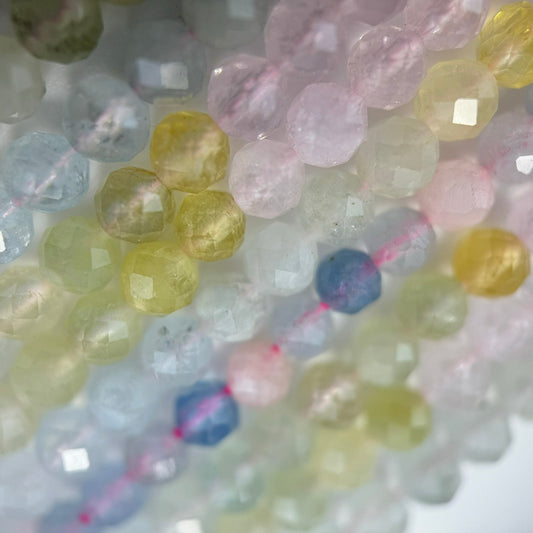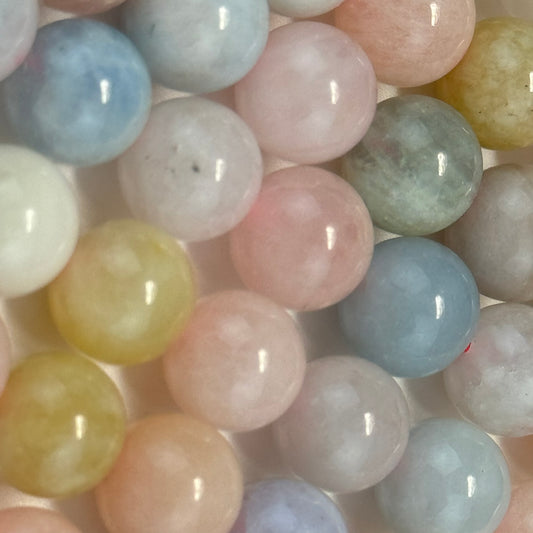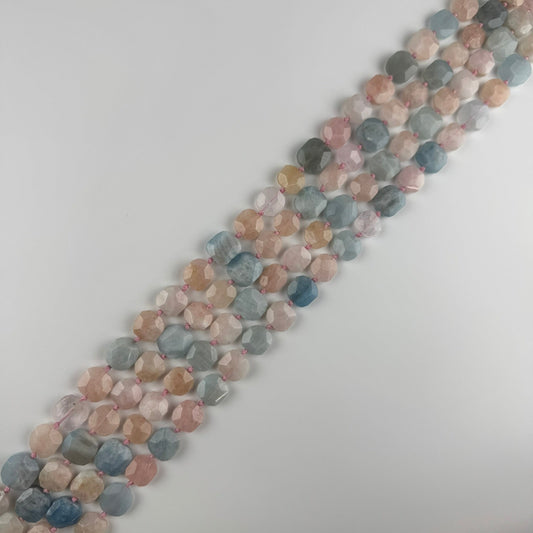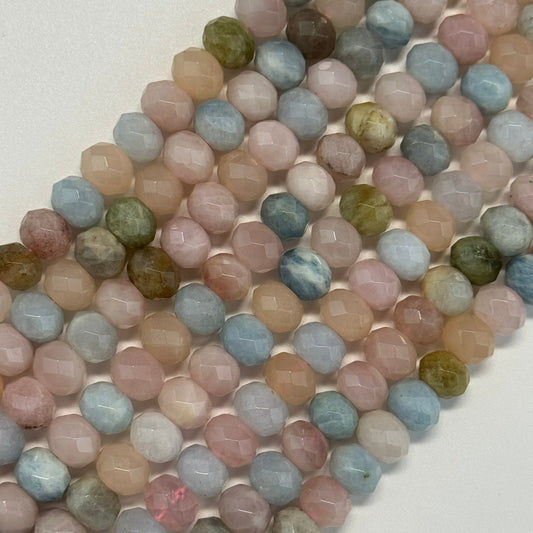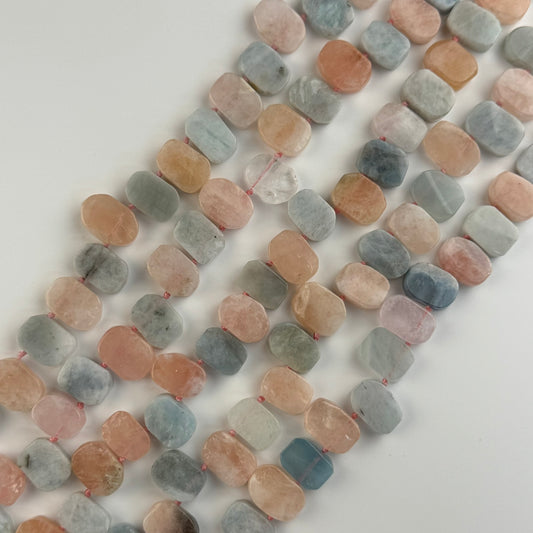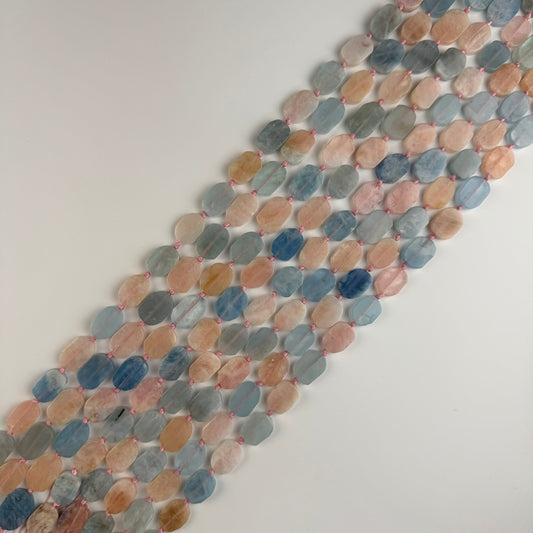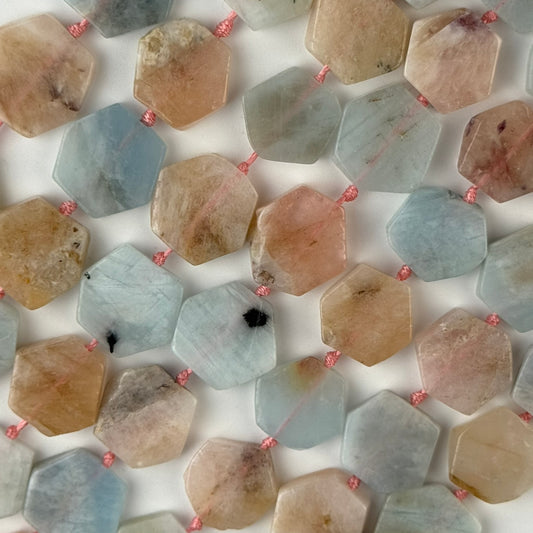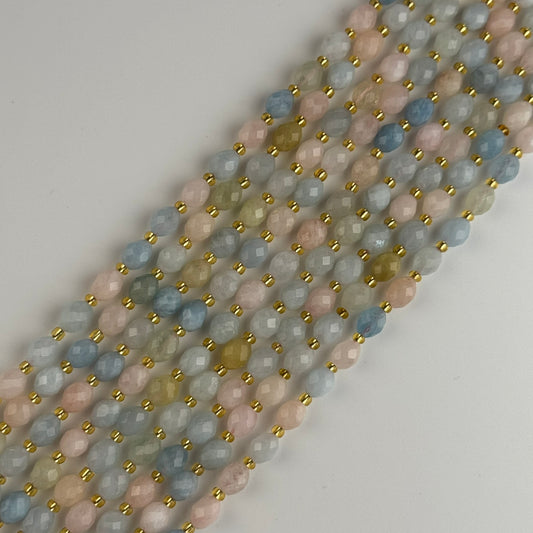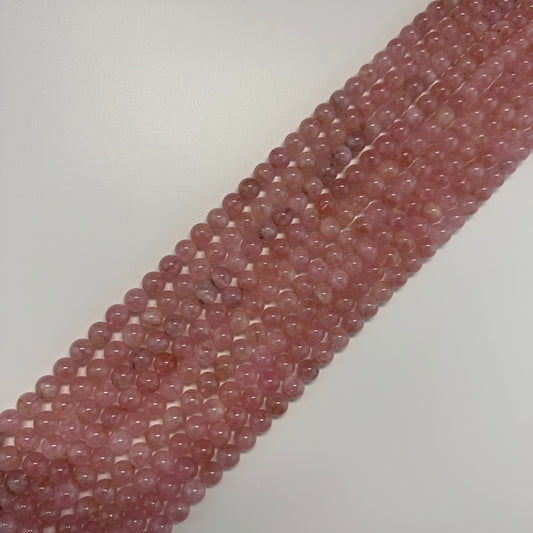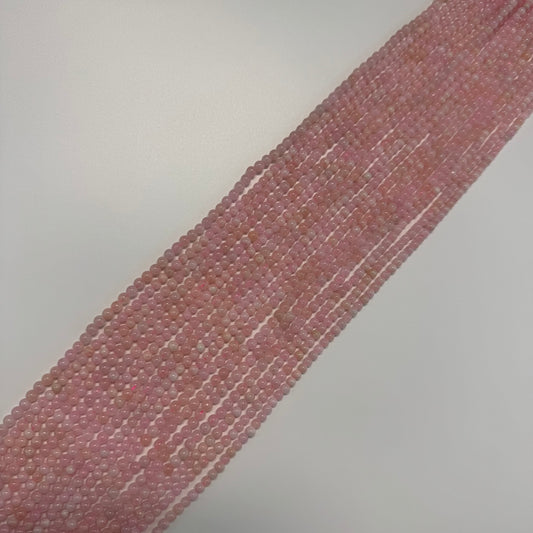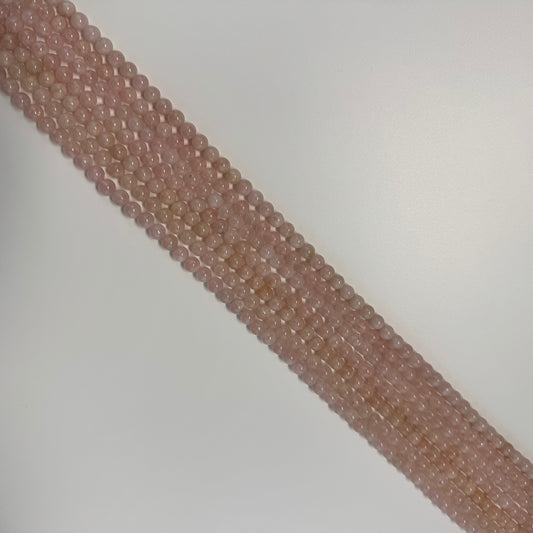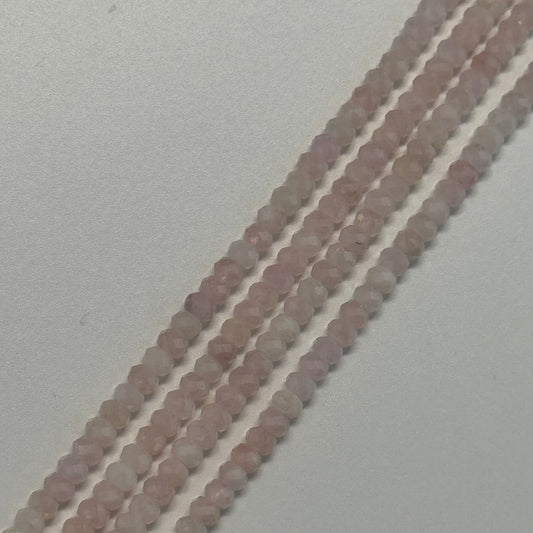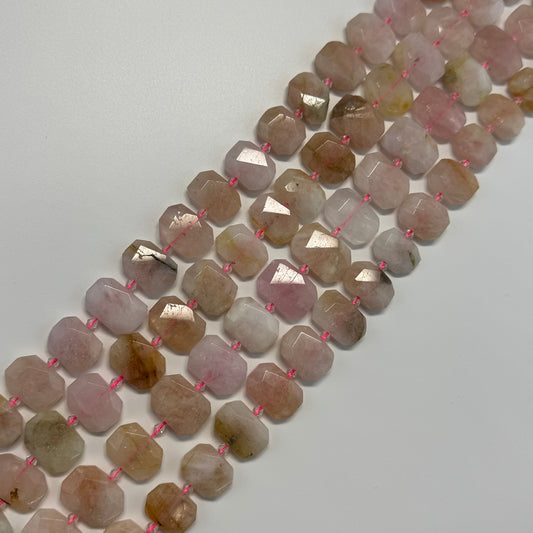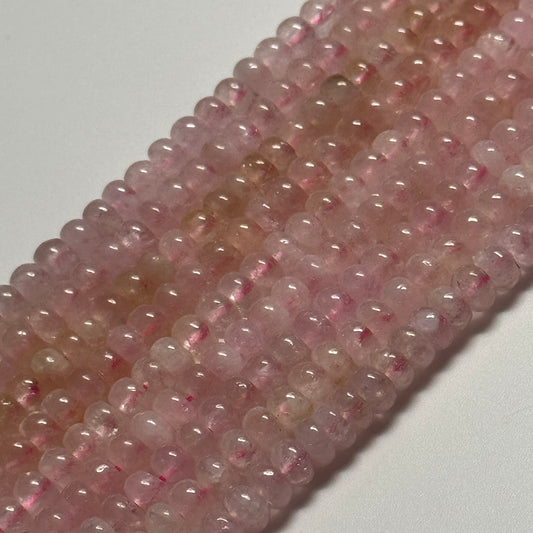Morganite Crystal Beads
Morganite Crystal Beads: Soft Pink Romance and Gentle Beauty
Embrace the delicate charm of morganite crystal beads, featuring soft peachy-pink to rose hues that evoke romance, tenderness, and feminine elegance. These gentle gemstone beads offer a subtle, sophisticated beauty perfect for creating romantic and graceful jewelry pieces.
Morganite's Romantic Appeal
- Soft Pink Hues: Delicate peachy-pink to rose tones that flatter all skin tones
- Translucent Beauty: Semi-transparent quality that allows light to pass through gently
- Romantic Symbolism: Associated with love, compassion, and emotional healing
- Sophisticated Elegance: Refined beauty that works for both casual and formal jewelry
Romantic Jewelry Styles
- Bridal Collections: Perfect for wedding and engagement jewelry with soft romance
- Feminine Designs: Ideal for elegant, womanly jewelry that celebrates gentleness
- Gift Jewelry: Excellent choice for expressing love and affection through jewelry
- Spring Collections: Perfect for seasonal jewelry that celebrates renewal and beauty
Designing Romantic Jewelry
- Pair with rose gold findings to enhance the warm, romantic pink tones
- Combine with pearls for a classic, timeless romantic aesthetic
- Create subtle gradations by mixing different shades of morganite
- Use as delicate accent beads with white or cream tones for soft contrast
- Design with flowing, organic shapes that complement the gentle nature of the stone
Delicate Selection & Romance
Every morganite crystal bead is lovingly selected by expert gemologist Reza Piroznia, ensuring authentic stones with beautiful peachy-pink coloration. These beads are perfect for jewelry creators who seek to craft pieces that embody romance, tenderness, and timeless feminine elegance.
Frequently Asked Questions
What is a Morganite Gemstone?
Morganite is a type of beryl, a mineral that includes emerald and aquamarine. It is known for its delicate pink to peach color, brought about by traces of manganese. Morganite was named after J.P. Morgan, a noted financier and gem enthusiast.
What are Morganite Beads?
Morganite beads are small, usually round-shaped pieces of morganite gemstone that are often drilled through the center. These beads are used in the creation of a variety of jewelry pieces such as necklaces, bracelets, and earrings. Their unique pink and peach hues offer a stunning addition to any jewelry piece.
What are the notable features of Morganite beads?
Morganite beads are typically translucent to transparent, with a vitreous luster. They exhibit pleochroism, showing pale pink, blush rose, or peach depending on the viewing angle. Their hardness on the Mohs scale is 7.5 to 8, making them durable for various jewelry-making applications.
What are the physical and metaphysical properties of Morganite beads?
Physically, Morganite is a durable gemstone suitable for everyday wear. Metaphysically, it is known as a stone of divine love. It's believed to nurture feelings of compassion, assurance, and promise, and promote the flow of energy throughout the body.
How to care for and maintain Morganite bead jewelry?
Morganite bead jewelry should be cleaned with soapy water and a soft cloth, avoiding harsh chemicals. Though durable, it can still get scratched by substances with higher hardness, so store it separately from other jewelry. Avoid extreme heat which can alter the gemstones' color.
What are the common uses of Morganite beads in jewelry making?
Morganite beads are popular for creating necklaces, bracelets, earrings, and even rosaries. Their soft color makes them versatile for use in both casual and formal designs. They lend a feminine and elegant touch to any jewelry piece.
How can you assess the quality of Morganite beads?
The quality of Morganite beads can be determined by color, clarity, cut, and carat weight. The most prized color is a vivid pink or rose. Clarity should be eye-clean, with the cut enhancing the bead's brilliance. Larger beads are typically more valuable.
What is the historical and cultural significance of Morganite?
Morganite was discovered in California in the early 20th century and was named after financier J.P. Morgan. Its peachy-pink tone has made it popular in engagement rings, symbolizing love and commitment. It's also known in many cultures as a healing crystal.
What are the healing and spiritual properties of Morganite beads?
Morganite is considered a heart chakra stone and is believed to carry an energy that can warm the soul. It is said to attract love and maintain it, encourage loving thoughts and actions, and create a space where inner peace can be experienced.
What are some tips for storing and preserving Morganite bead jewelry?
Store Morganite bead jewelry separately in a fabric-lined box or pouch to prevent scratches. Avoid prolonged exposure to strong light or heat to maintain its color. Regularly clean it using a gentle soap and warm water to keep it lustrous.
How can you style jewelry with Morganite beads?
Morganite beads can be paired with both warm and cool tones. They can be styled with rose gold for a feminine and romantic look, or with white metals for a contemporary, chic style. Mixing them with darker gemstones can add a dramatic contrast and make them stand out.
What are some techniques for stringing Morganite beads?
Morganite beads can be strung on beading wire, silk, or nylon thread depending on the desired look. Using spacer beads between the Morganite can highlight their color. Always use a bead stopper at the end to prevent them from sliding off.
How much do Morganite beads typically cost?
The price of Morganite beads varies greatly depending on their quality. Expect to pay more for beads with a deeper, more intense color, larger size, and higher clarity. Prices can range from $20 to $200 per bead.
How can one verify the authenticity of Morganite beads?
Look for Morganite's characteristic peach-pink hue and vitreous luster. It should be relatively inclusion-free. A reputable gemologist can confirm its authenticity through tests like refractive index measurement and observation of its pleochroic nature.
Where are Morganite gemstones typically mined?
Morganite is found in several locations across the globe, including Afghanistan, Brazil, China, Mozambique, Namibia, and the United States, particularly California and Maine. The color can vary slightly depending on its geographical origin.
What gemstones pair well with Morganite beads?
Morganite pairs well with white gems like diamond, pearl, and moonstone for a soft and romantic look. It can also be combined with darker stones like black onyx or blue sapphire for a striking contrast. Its pink hues complement green gemstones, such as emerald and peridot.
What advice would you give a beginner interested in Morganite bead jewelry making?
Start with a simple project like a bracelet or a necklace. Purchase beads from reputable sellers to ensure quality. Choose a strong, yet flexible stringing material. Lastly, always handle Morganite beads with care to prevent any damage.
What are some advanced techniques that can be used with Morganite beads?
For advanced crafters, Morganite beads can be incorporated into intricate beading patterns, wire wrapping, bezel setting, or mixed media designs. In bead weaving, they can be used as the main focus or as accents to other gemstones.
What are some common misconceptions about Morganite beads?
A common misconception is that Morganite is just a "cheaper pink emerald". While they belong to the same mineral family, Morganite has its own unique beauty and value. Also, its color is natural, not a result of treatments like some believe.
Do professional jewellers have specific tips regarding Morganite bead jewelry?
Professionals recommend always checking the hole size of the beads before purchasing stringing materials. Morganite beads' color can look different under various lighting situations, so they suggest reviewing the beads under multiple light sources for true color understanding.

